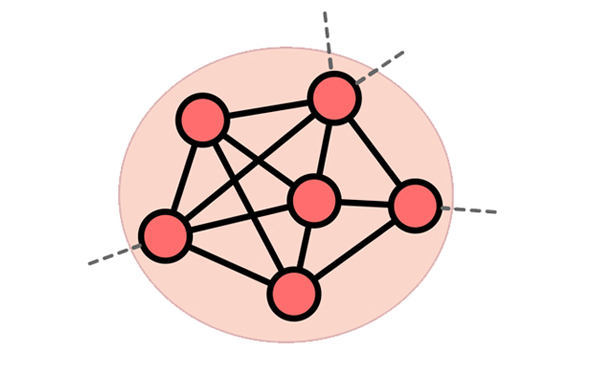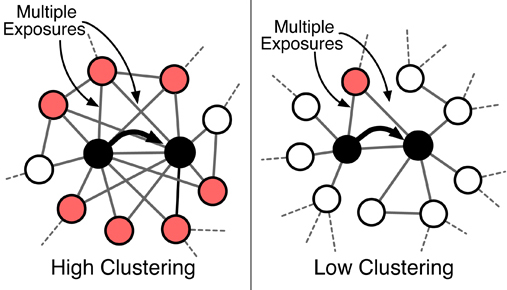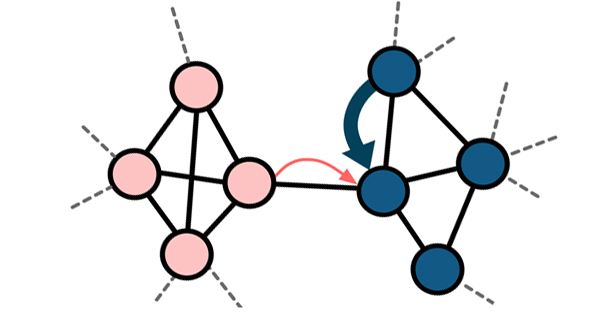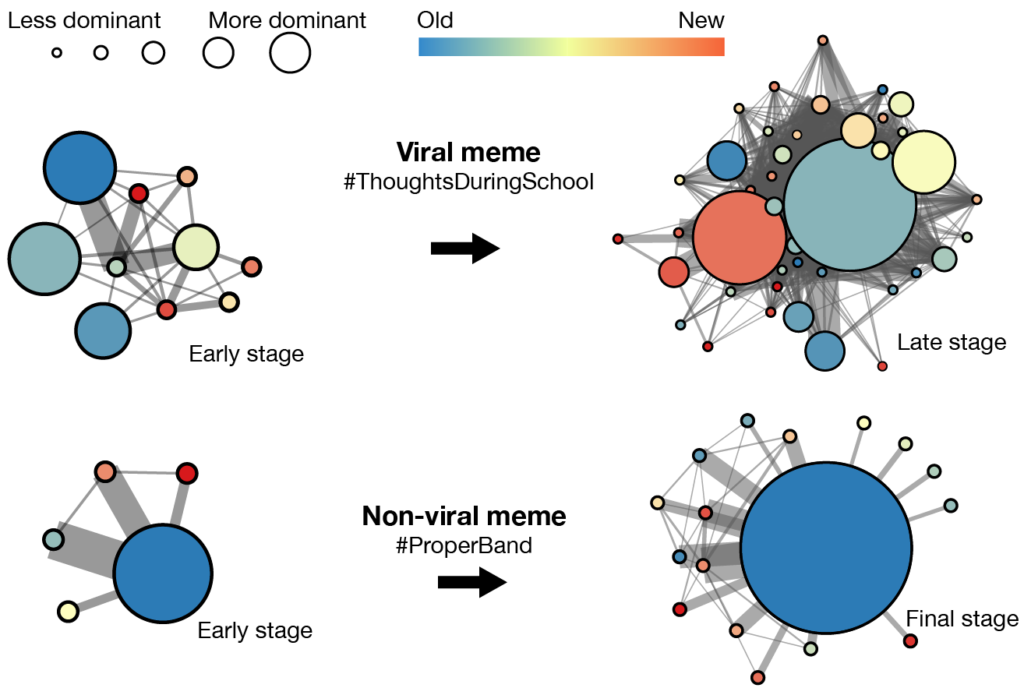In today’s media-driven and ever-connected digital landscape, it is hard to understate both the prevalence and significance of memes in our modern society. From mindlessly filling up your instagram feed, to serving as fuel for the protesters in Hong Kong, memes are now a common and effective way of communicating ideas en masse.
As such, it could be insightful to understand just what separates a great, or viral, meme from all the others. In a 2013 paper by Weng et al., they found that they were able to predict the virality of a meme based on whether it spread like a simple or complex contagion. Complex contagions often start with a very small probability of adoption, but can increase this probability with multiple exposures. This behaviour lends itself to a ‘trapping’ effect within communities, where it spreads quickly within the community but becomes difficult to leave it, based on the principles of Structural Trapping, Social Reinforcement, and Homophily (as discussed in class).

Structural Trapping 
Social Reinforcement 
Homphily
Memes that spread like simple contagions however, are much more akin to diseases. In this situation, each individual exposure carries the same probability of adoption, but that base probability is often significantly higher than those of complex contagions. As a result, these memes don’t falter and stew in 1 or 2 communities, but quickly infect the whole network.
Based on this understanding of meme virality as a symptom of its contagion type, Weng et al. were able to build a ML model that could predict which memes would take off based on its initial spread amongst communities. In the following diagram, we can see that the non-viral meme (a complex contagion) was heavily-concentrated in one community, but was unable to find a decent footing in any others. In contrast, the viral meme (a simple contagion) did not have as heavy a concentration in any single community, but did manage to gain a decent spread amongst several communities. We can then see the results of these spreads as the viral meme was able to infect a plethora of new communities on a regular basis (notice the prominent circles with a redder hue). Meanwhile, the non-viral meme was relegated to it initial community (dark blue circle) and did not have anywhere near as much of an impact on the few other communities it did get into.

In conclusion, we can clearly see that, as a by-product of the way social communities (which are just social networks) interact, it is more optimal for a meme to loosely relate to a wide variety of people than to strongly relate to any one group. Indeed, this revelation may seem quite intuitive, but it is nice to have this intuition grounded in data and empirical analysis. After all, if we still can’t beat the common cold, how could we ever hope to beat Pepe the Frog?
References
Lilian Weng, Filippo Menczer, and Yong-Yeol Ahn. Virality Prediction and Community Structure in Social Networks. Nature Scientific Report. (3)2522, 2013.
Companion Webpage found at: https://lilianweng.github.io/virality.html

Wow, this is a good post! I agree that good memes are like diseases and yes, Pepe the frog might never become obsolete. In class, we explored multiple models for studying epidemics one of which was the SIS (susceptible, infected, susceptible) model. Perhaps this model can be applied to memes to understand why some old memes are revived and possibly popular again within the same community.